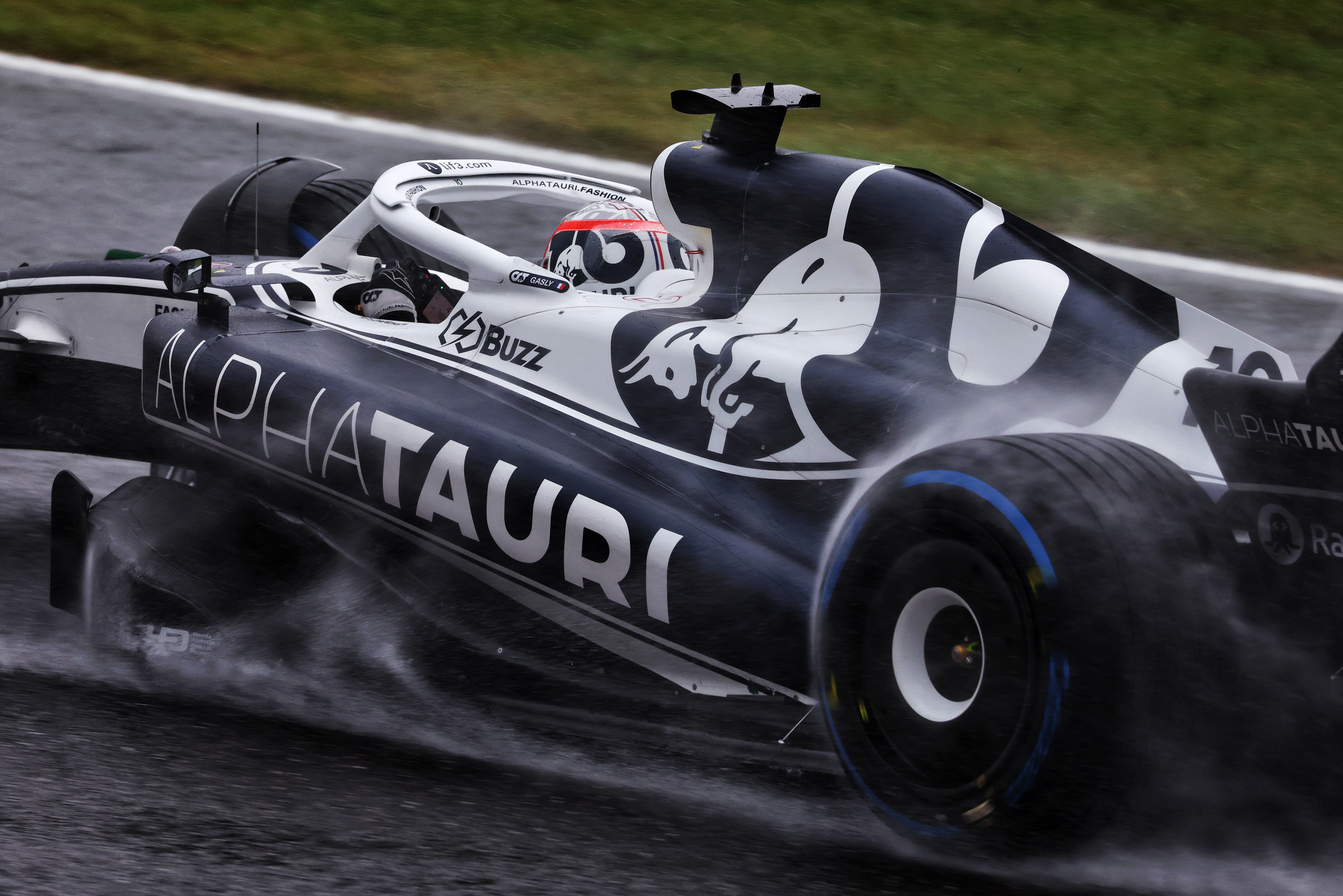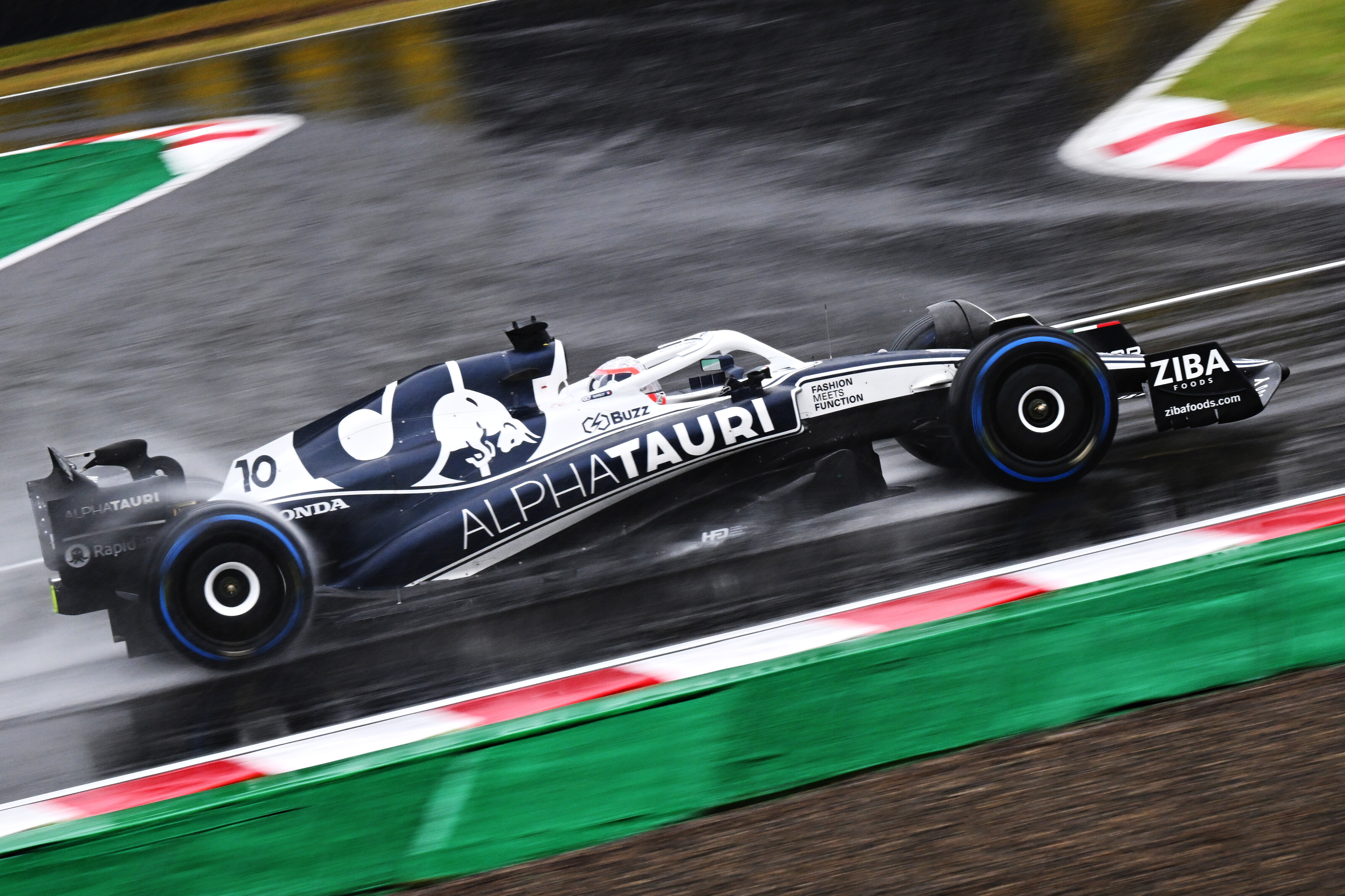Up Next

Pierre Gasly was found to be driving in a “reckless manner” under the safety car on the second lap of the Japanese Grand Prix, according to the FIA’s review of the handling of the race, which was partly down to a weakness in the way the delta-time system limits speed.
Under the safety car, the FIA standard ECU produces a minimum time that a driver must be above at least once in each of the marshalling sectors, which is in force until the second time each car reaches the SC1 line at pit entry. As Gasly stated after the race, he was always well above that delta time through each of the 20 marshalling sectors at Suzuka.
That’s why, while he was given a 20-second penalty and two superlicence penalty points after the race for speeding under red flag conditions, there was no punishment for his driving under the yellow flag/safety car conditions before the race was stopped despite the belief he should have been travelling more slowly
The AlphaTauri driver collected an advertising hoarding spat onto the track by Sainz’s accident on the opening lap, which led to him pitting at the end of the first lap. But as he’d slipped to being 18 seconds in credit against the delta time by the time he reached the pit entry (where the first safety car line is located), he was still significantly in credit when he left the pitlane given this is not reset when a car pits and was therefore allowed to go more quickly than intended.
“GAS who clipped the advertising board was, for obvious reasons, slower than the SC delta times,” said the report. “The result was that his delta time grew increasingly more positive.

“By the time he reached the pit entry and SC1 line, he was 18 seconds slower than the targeted delta time. The delta time is not reset in the pit lane so, when he left the pit lane at the SC2 line he still had an additional 18 seconds on his SC delta.
“The result of this is that he could drive at a pace that was 18 seconds faster per lap than the specified SC delta lap time without triggering the delta time alarm.
“Consequently, for the lap that GAS drove after pitting, despite driving considerably faster than what would be expected under these circumstances, he was still in conformity with the requirements of the SC delta controls that were in place.”
The red flag was deployed just one second before Gasly passed the Sainz crash site. The FIA’s report stated that “just a few metres before GAS reached the incidents, yellow flags with SC boards and SC TSPs switched to red flags”.
He was then clocked as travelling at 189km/h when he passed Sainz’s car, which was being recovered by a tractor and marshals on the track. The report stated he passed the site of the recovery of Alex Albon’s Williams shortly after at 163km/h and that “in neither of these two cases were GAS’s car speeds compatible with the obligation to slow down and be able to stop his car”.
While Gasly, therefore, adhered to the delta-time regulations, it was felt that he’d failed to drive in an appropriate manner prior to the red flag.

The FIA report accepted there were other problems with the recovery procedure – for example suggesting that it would have been better to delay deploying recovery vehicles –and suggested ways to improve it in the future, but did stress that Gasly’s driving under the yellow flags was a concern.
“Without undermining responsibilities regarding safety on track, we must also consider as detailed above that GAS drove in a reckless manner by not respecting the flags, thereby ignoring the basic safety rules,” said the report.
Several measures relevant to this were included in the report in the actions list for use in 2023. This includes the “dynamic VSC” that would change the delta speed to be adhered to before and in the sectors where there is an incident.
Effectively, this would have created a lower, short-term speed limit for Gasly to drive to. Also, closing the pit exit during a safety car period and opening it only each time the SC train passes the pit exit will be considered – potentially at the discretion of the race director.
There has already been a review of the penalties precedents for drivers “not respecting the rules relating to yellow, double yellow, VSC and SC conditions” with the intent to draft penalty guidelines for not slowing adequately. These guidelines will be applied from this weekend’s United States Grand Prix onwards as part of a push to ensure drivers do not drive too quickly under yellow flag and safety car conditions.
Although this was not mentioned in the report, it would also appear logical for the FIA to evaluate a way to modify the minimum time issued to drivers who are in a similar position to Gasly to ensure their speed is controlled throughout the lap and not just immediately before and during the incident recovery zone.






